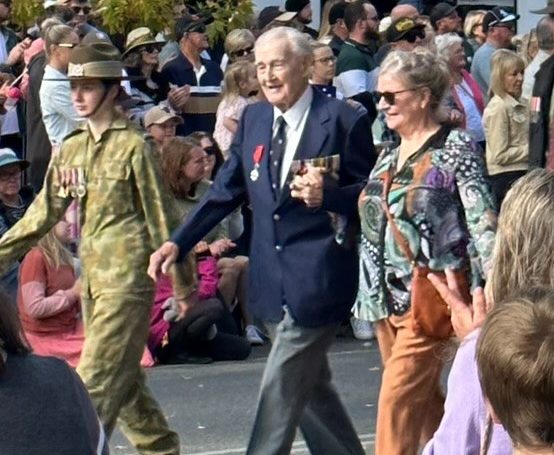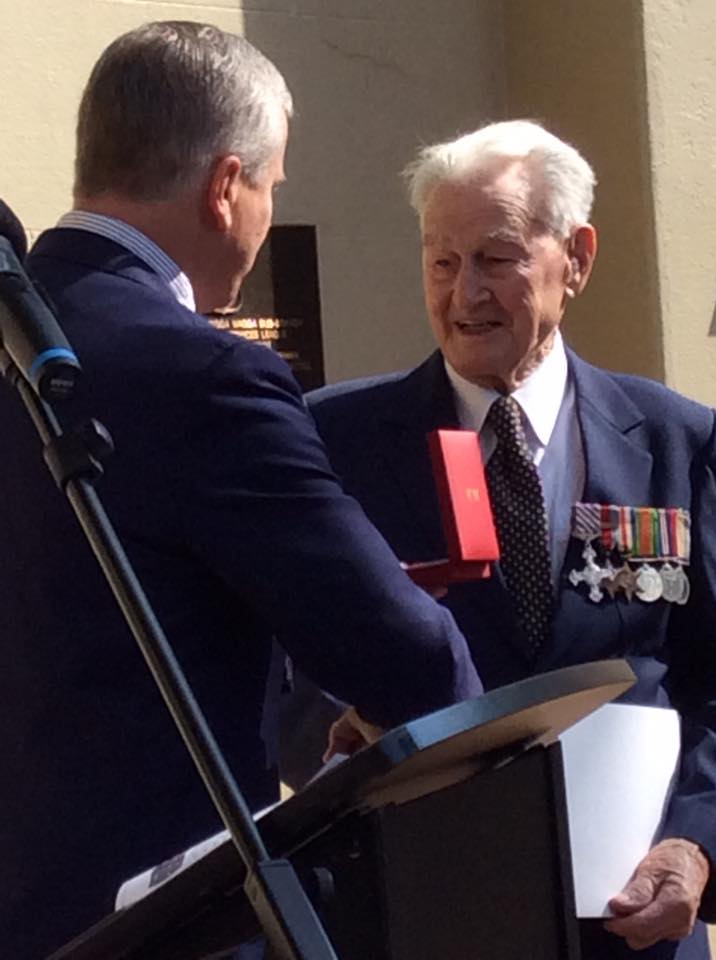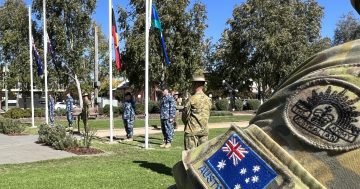
Herbert Adams is one of Australia’s few remaining World War II veterans and, aged 100, will be marching on Anzac Day. Photos: Wagga Wagga RSL Sub-branch.
According to Department of Veterans’ Affairs estimates, only 2500 of the nearly one million Australians who served in World War II are still alive today.
With 2024 marking 79 years since the conclusion of the war, it is rare and special for veterans of the bloodiest conflict in history to still march on Anzac Day.
This year, Wagga Wagga will be honoured with one of the region’s remaining WWII veterans, 100-year-old Herbert ”Bert” Adams, who served as a Lancaster bomber navigator with the RAAF’s No. 467 Squadron, making the march on Anzac Day.
Bert was born in Birriwa, a small town about 20 km north of Gulgong in the mid-east of NSW, in 1922. He lived and worked with his father at their stock agency before moving in 1938 to Mendooran, another town, around 3 km north of Birriwa.
Bert went to school in Mudgee, just south of Gulgong, and worked with his dad during school breaks. Once he left school, Bert worked in Sydney as a junior clerk.
In an interview with the International Bomber Command Centre Digital Archive in 2017, he said he didn’t enjoy his time as a clerk and signed up for the army as soon as he was able to, in 1942.
“When they brought in compulsory service for the army, I was very keen to get in because six shillings a day was big money,” Bert explained during the interview.
“I was paying board in Sydney and train fares and had nothing left. I couldn’t even play hockey because I didn’t have enough money to go and play hockey every weekend.”
Once enlisted, Bert travelled to Dubbo for infantry training before being invited to Moorebank for motor school training.
“[We had] a written exam at the end of it. Some of the fellas could barely read and write and they were in the army,” Bert said.
“I’d finished high school with good grades and I finished top of the course. I was invited to go to Sydney Tech College for six months and come out as a Warrant Officer Instructor.”
Following his brief time in the army, Bert made the switch to the Air Training Corps, where he’d been on a waiting list for aircrew. Once in, he was trained in bomb aiming, gunnery and astro navigation.
When his training was completed, Bert and 59 other navigators found their way to New York during Christmas 1943, when they were told they would be going to Britain as part of the bombing command and by New Year’s Eve, Bert found himself aboard a ship named Queen Elizabeth on the way to Europe.

Federal MP Michael McCormack presents Bert with the French Legion of Honour in 2017 for his service in helping liberate France from Germany in World War II.
Bert was eventually sent to an operational training unit in Litchfield, England, where he began flying in Vickers Wellington and Short Stirling planes as a navigator.
He and a crew of six or seven, depending on the size and make of the plane, would practise for several months before making the leap to Lancasters, in which he would serve as a part of 29 missions.
During the interview with the International Bomber Command Centre Digital Archive, Bert recalled his experiences during several daylight bombing raids across France and Germany between September 1944 and January 1945.
“We did a few daylight trips. The first and third ones were fairly big raids on Le Havre and Boulogne in daylight. Big armies,” he said.
He recalled one of the longest of his 29 operations, where didn’t have to drop a bomb, explaining how nervous he was sitting alongside the explosive device for almost 12 hours.
“We did one long trip to Trondheim in Norway, almost 11 hours. They put a smokescreen over the target and so the master bomber said, ‘Well, you can take your bombs home.’ So we did almost 11 hours with a full bomb load.
“I think earlier in the war, they might have ditched them but we brought our bombs back three times, I think.”
Once Bert’s service in WWII ended, he returned to NSW and opened a sporting goods store near Mudgee, where he would eventually meet his wife, Valerie. The pair made the move to Wagga Wagga in 1965, which would see Bert rejoin the air force as an instructor for younger trainees.
Following his second stint in the air force, he was a teacher at Mount Austin High School until 1984 when he retired.
Since retiring, he has continued his love of sport, playing hockey locally and growing his passion for golf. In 2017, he was presented with the French National Order of the Legion of Honour, one of the highest military honours that France awards.
Now, at 100 years young, Bert continues to march on Anzac Day as one of Australia’s oldest veterans, keeping the legacy of those who served in World War II alive and strong.








